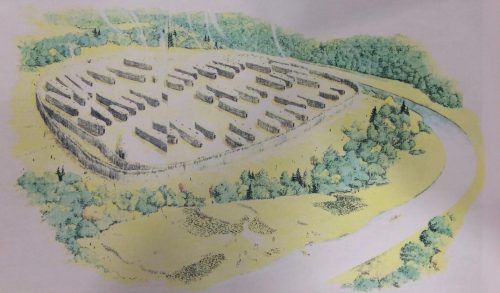When the Toronto area was first explored by Europeans it was occupied by the Iroquois, who had established several settlements in the area - the largest of which being Teiaiagon on the banks of the Humber River, home to an estimated 5000 people.
 https://www.toronto.ca/wp-content/up...ge-500x293.jpg
https://www.toronto.ca/wp-content/up...ge-500x293.jpg
It and the other settlements were abandoned when the the Mississaugas displaced the Iroquois in 1701 however. The French were next to establish trading posts in the area, Fort Douville in 1720 on the Humber, and Fort Rouillé in 1750 on what are now the Exhibition grounds, but they too were abandoned shortly thereafter when the British conquered New France.
The beginnings of the current city start when the British founded the town of York in 1793 to be the new capital of Upper Canada. It was a pretty minor outpost for the first few decades though, with the population maxing out at around 1,500 people until the town was sacked and burnt to the ground in the War of 1812.
 https://en.wikipedia.org/wiki/York,_...:York_1803.jpg
https://en.wikipedia.org/wiki/York,_...:York_1803.jpg
Where the city's urban history really begins is in the 1830s. This is when it was incorporated as Toronto, and the population boomed as tens of thousands of Irish immigrants arrived (Toronto's population was over 90% Irish at the time), the city modernized, and experienced events like the Upper Canada Rebellion.
 https://en.wikipedia.org/wiki/File:K...onto-1840s.jpg
https://en.wikipedia.org/wiki/File:K...onto-1840s.jpg
Not much of this era remains though the beyond the street grid that was established - it was the 1880s where the modern, industrial city really emerged in earnest, with the population more than doubling from 80,000 to 190,000. Much of the original Georgian city was swept away over the coming decades and replaced by the new Victorian one which still defines much of the cityscape.
From this, in the 1850s:
 https://www.blogto.com/city/2011/01/..._of_the_1850s/
https://www.blogto.com/city/2011/01/..._of_the_1850s/
To this a few decades later:
 https://torontolife.com/culture/art/...n-photo-essay/
https://torontolife.com/culture/art/...n-photo-essay/



